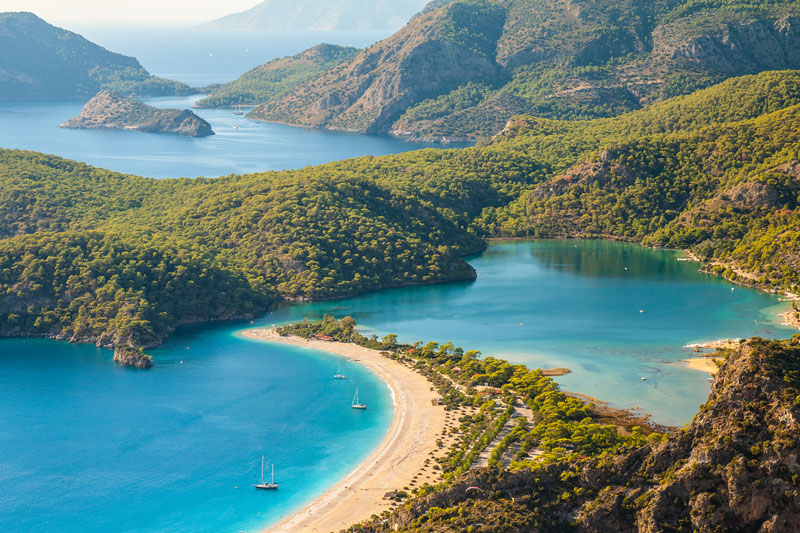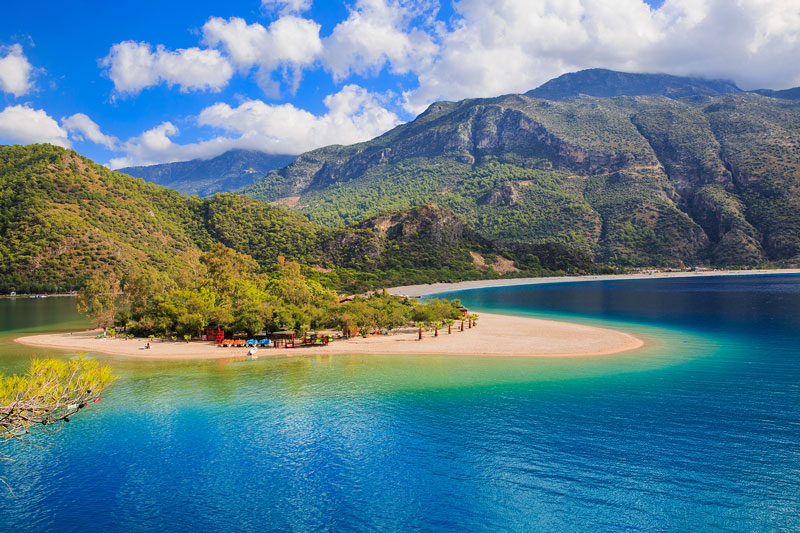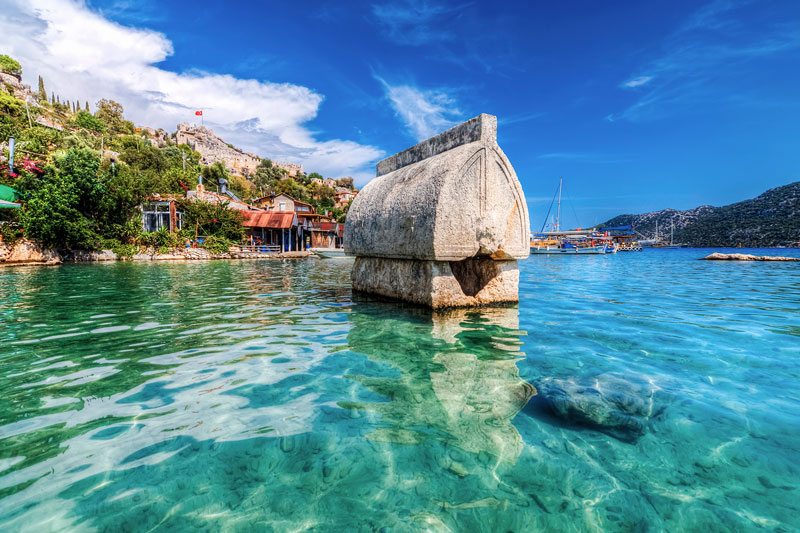From Bodrum down to Fethiye, the Turkish coast is rich in anchorages, bays and the ruins of ancient civilisations. Gocek is a charming town with excellent facilities for the yachtsman, including three marinas, the largest of which is the well-equipped Port Gocek.
There is excellent shopping here, including a fascinating street market on Sundays with everything from counterfeit designer goods to mouth-watering food and restaurants offering good dining at reasonable prices. Yacht tourism drives Gocek so you’ll see no high-rise hotels and crowded beaches, just hundreds of yachts.
Fethiye has a much larger weekly market (on Tuesdays), but on other days there is an intriguing bazaar to explore where high priced designer name shops rub shoulders with Turkish carpet sellers and stalls selling huge selection of brightly coloured herbs and spices.
Itinerary – Göcek & Fethiye

Day 1 – Göcek
Lying at the head of the Gulf of Fethiye and surrounded by numerous islands, Göcek is an exceptionally stunning and welcoming small village, well known for its crystal-clear waters, beautiful bays, spectacular scenery, amazing nature, fresh air, delicious food and friendly people. There are numerous attractions for visitors - striking houses, restaurants, cafes and shops are lined in the beautifully landscaped waterfront promenade, whereas the majestic mountains and pine tree forests rise right from the coastline to invite you to the magnificent scenery.
Day 2 – Kapi Creek
Kapi Creek is renowned for its calm clear water and picture-perfect scenery - with lushly vegetated shores, thick with olive and pine trees and some of the warmest waters in the Mediterranean. On the west side are the ruins of two old dwellings with vaulted roofs, looking something like small chapels. The one with the triple-vaulted roof is particularly intriguing, with no obvious explanation for its complex construction. A short walk over the hill is the sea again, on the eastern side of the peninsula at Ragged Bay. This is a delightful cove, shaded by pine trees down to the water’s edge. There is just a single restaurant here with freshly baked ‘village bread’ available in the mornings, delicious and lasting well on board.


Day 3 – Ekincik Limani
Ekincik has a magnificent stretch of beach, a beautiful backdrop of lush green pine trees, is home to many caverns and caves and great trekking in the mountains behind. It is an ideal place to visit the ancient city of Caunos, some five miles up the Dalyan River – the reed-lined river setting with Lycian rock tombs in the nearby cliffs is superb. There are Roman baths, a theatre, temple, market place and a medieval fort crowning a steep knoll. Nearby, Iztuza beach, is an important egg-laying site for the endangered loggerhead turtle, for which the late June Haimoff worked tirelessly to prevent hotel development along the beach.
Day 4 – Fethiye
Fethiye was flattened in the same 1958 earthquake that destroyed Marmaris, with only the occasional gem of an older surviving building tucked away in the now modern streets. The market area is a fascinating warren of shops and stalls, selling things, fixing things, making things of every description from copper plates for tourists to agricultural implements for farmers in the hinterland. In the cliffs behind the town are several Lycian rock tombs – virtually all that remains of ancient Telemessus, the principal port of Lycia. The largest is the Tomb of Amyntas, an imposing tomb with Ionic columns, dating from the 4th century BC.


Day 5 – Gemiler
One of the prettiest islands in the Mediterranean, Gemiler is filled with history, incredible views and thought to be the birthplace of Saint Nicholas. Inhabited by the Lycians from 15th century BC, there are the remains of four Byzantine churches, many other buildings and a processional walkway (a breath-taking piece of architecture running from the top of the island to the sea) built between 3rd- 6th centuries AD. Situated just a short distance away from the island is the world famous Öludeniz beach - one of the most photographed beaches of the Mediterranean and widely regarded as one of the best places to paraglide in the world.
Day 6 – Tomb Bay
This is an attractive spot, with steep slopes, clad in pine, dropping down to the coast and beach with oleander growing around the shore. On the steep cliffs on the north side are Lycian rock tombs, mostly smaller than seen elsewhere. These house the remains of the inhabitants of Crya, an ancient provincial town sited on the summit of the cliffs. It controlled the two islands in the gulf of Domuz and Tersane. It is worth a walk up to the tombs, as much for the dramatic site as for the tombs themselves. Closer to shore is a fish painting, supposedly by an Istanbul artist, Bedri Rahmi Eyüboğlu, in 1974. From its bright appearance it looks to get restored from time to time.

